Puts3object Aws S3 Multipart Upload Failing With Connection Reset
When uploading a >5Mb file to an AWS S3 saucepan, the AWS SDK/CLI automatically splits the upload to multiple HTTP PUT requests. It'southward more efficient, allows for resumable uploads, and — if one of the parts fails to upload — the part is re-uploaded without stopping upload progress.
However, in that location lies a potential pitfall with multipart uploads:
If your upload was interrupted before the object was fully uploaded, yous're charged for the uploaded object parts until yous delete them.
As a outcome, you may experience a subconscious increment in storage costs which isn't credible correct away.
Read on to see how to identify uploaded object parts, and how to reduce costs in the consequence that there are unfinished multipart uploads.
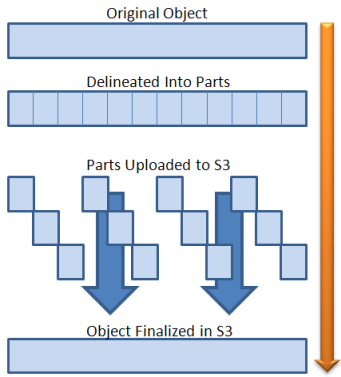
How can I find uploaded object parts in AWS S3 Console?
This is the interesting part, you lot tin can not see these objects in AWS S3 Panel.
For the purpose of this commodity, I created an S3 bucket and uploaded a 100Gb file. I stopped the upload process after 40Gb were uploaded.
When I accessed the S3 Console, I could see that there are 0 objects in the saucepan and that the S3 console is not displaying the 40Gb that were uploaded (multipart)
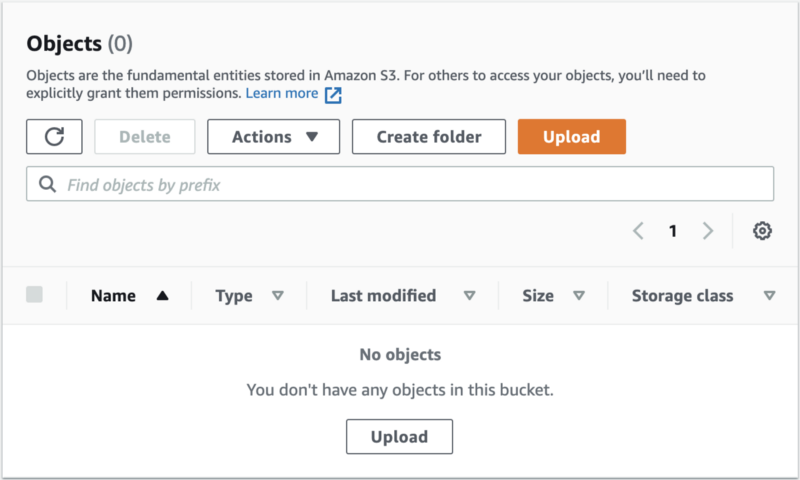
Then I clicked on the Metrics tab, and I saw that the bucket size is 40Gb
It may take several hours for updated metrics to announced.
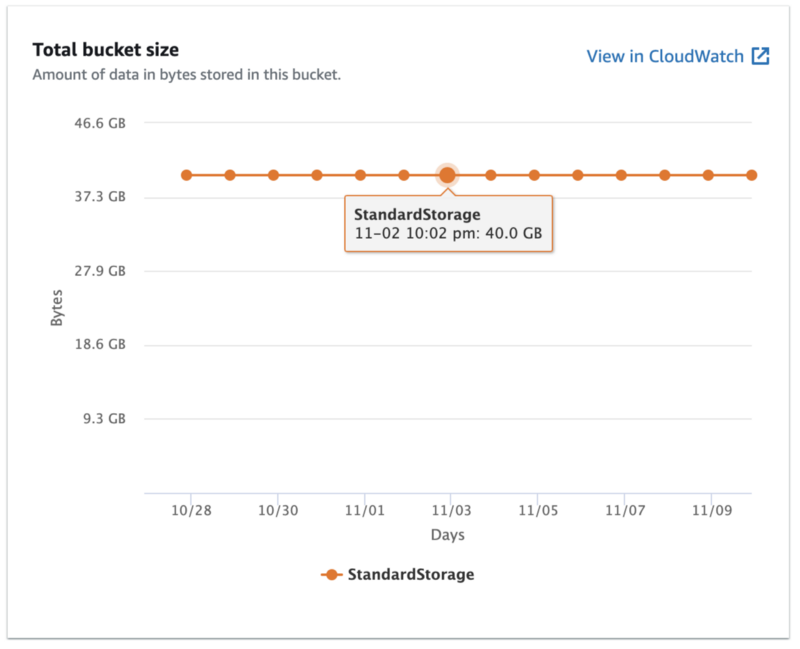
This means that even though y'all can't see the object in the console because the upload didn't cease, you are still being charged for the parts that were already uploaded.
How is this addressed in the real earth?
I've approached several colleagues at diverse companies that run AWS account with a substantial AWS S3 monthly usage.
The bulk of these colleagues all had betwixt +100Mb upward to +10Tb of unfinished multipart uploads. The general consensus was that the larger the S3 usage and the older the account, the more than incomplete objects existed.
Computing the multipart role-size of a single object
First, within the AWS CLI, listing the current multipart objects with the following control:
aws s3api list-multipart-uploads --saucepan <bucket-proper noun>
This outputs a list of all the objects that are incomplete and have multiple parts:
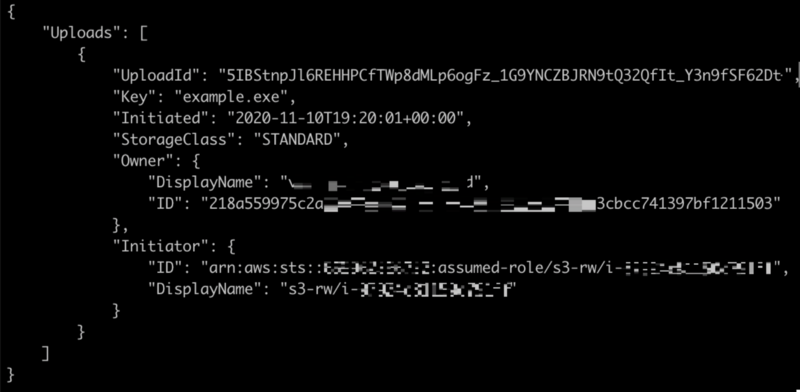
So, list all the objects in the multipart upload by using the list-parts control with the "UploadId" value:
aws s3api listing-parts --upload-id 5IBStnpJl6REH... --bucket <saucepan-name> --key example.exe
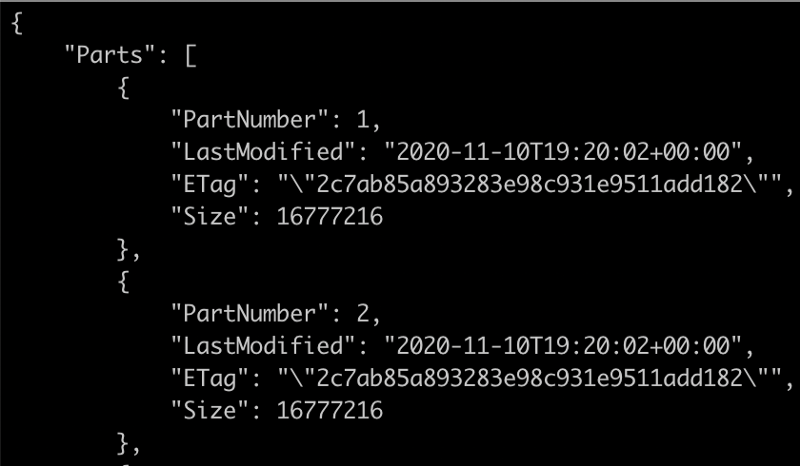
Next, sum the size (in bytes) of all the uploaded parts and catechumen the output to Gb by using a JQ (command-line JSON processor):
jq '.Parts | map(.Size/1024/1024/1024) | add'
If you lot want to delete a multipart upload object manually, yous can run:
aws s3api abort-multipart-upload --bucket <bucket-name> --key example.exe --upload-id 5IBStnpJl6REH...
How to stop existence charged for unfinished multipart uploads?
By setting at the bucket level, you can create a lifecycle rule that will automatically delete incomplete multipart objects after a couple of days.
"An S3 Lifecycle configuration is a set of rules that define actions that Amazon S3 applies to a grouping of objects." (AWS documentation).
Below are 2 solutions:
- A transmission solution for existing buckets, and
- An automatic solution for creating a new bucket.
Deleting multipart uploads in existing buckets
In this solution, y'all'll create an object lifecycle rule to remove old multipart objects in an existing bucket.
Caution: Be careful when defining a Lifecycle dominion. A definition mistake may delete existing objects in your bucket.
Start, open the AWS S3 console, select the desired saucepan, and navigate to the Management tab.
Under Lifecycle rules, click on Create lifecycle rule.
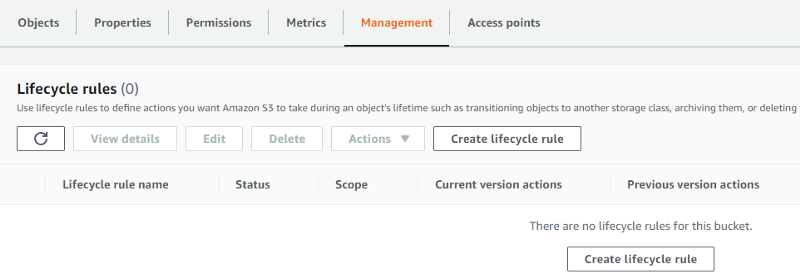
And then proper name the lifecycle dominion and select the dominion's scope for all objects in the bucket.
Bank check the box for "I acknowledge that this rule will utilise to all objects in the bucket".
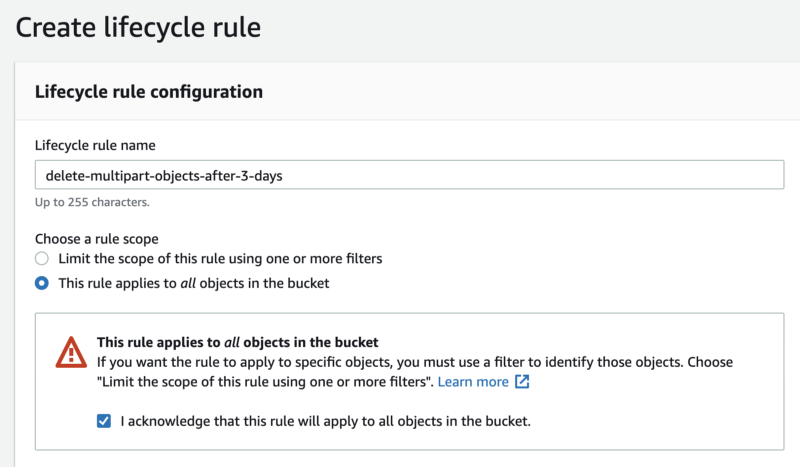
Next, navigate to Lifecycle dominion actions and check the box for "Delete expired delete markers or incomplete multipart upload".

Cheque the box for "Delete incomplete multipart uploads", and set the Number of days according to your needs (I believe that three days is enough fourth dimension to stop uncompleted uploads).
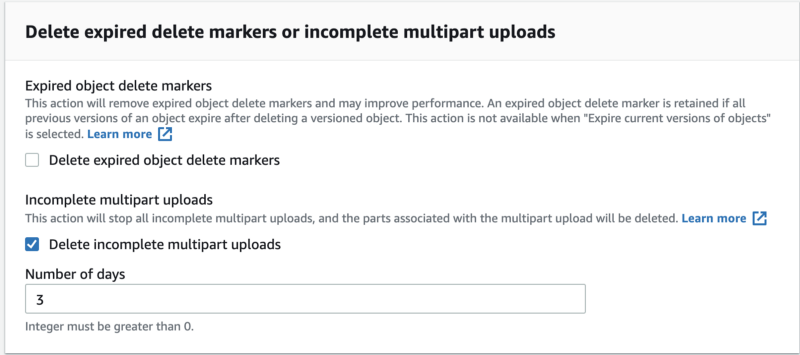
Mail service successful completion of the steps above, the multipart files that were uploaded will exist deleted, but not immediately (it'll take a footling while).
2 things to note:
- Delete operations are free of charge.
- Once you have defined the lifecycle dominion, you lot are non charged for the information that will be deleted.
Creating a lifecycle rule for new buckets
In this solution, you'll create a lifecycle rule that applies automatically every time a new bucket is created.

This uses a straightforward lambda automation script, which is triggered every time a new saucepan is created. This lambda function implements a lifecycle rule for deleting all the multipart objects which are 3 days sometime.
Notation: Since EventBridge runs only in the region in which information technology is created, y'all must deploy the lambda part in each region you operate.
S3 Direction Console — Watch Video
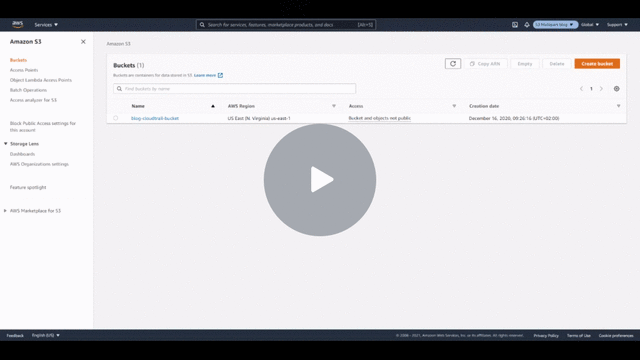
How to implement this automation?
- Enable AWS CloudTrail trail. One time you configure the trail, y'all can use AWS EventBridge to trigger a Lambda office.
- Create a new lambda function, with Python iii.8 as the function Runtime.
- Paste the code below (Github gist):
4. Select create function.
five. Curl to the top of the page, nether Trigger select 'Add trigger' and for the Trigger configuration, choose EventBridge.
Then create a new rule and give the dominion a name and description.
vi. Choose Event pattern in rule type, choose Unproblematic Storage Services (S3) and AWS API phone call via CloudTrail in the two boxes beneath
Nether the Detail box, choose CreateBucket in Functioning
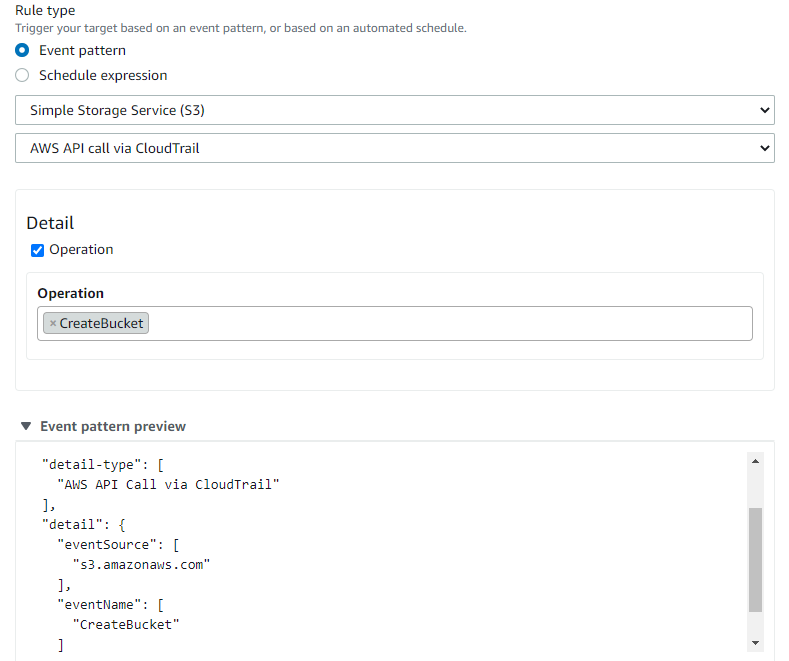
Scroll down and click the Add together button.
vii. Curlicue down to the Basic settings tab, and select Edit → IAM role and attach the policy as given below.
This policy will allow the lambda office to create a lifecycle configuration to all the buckets in the AWS account.
{ "Version": "2012-10-17", "Statement": [ { "Sid": "VisualEditor0", "Effect": "Allow", "Action": "s3:PutLifecycleConfiguration", "Resource": "*" } ] } 8. Create a bucket to check that the lambda function is functioning correctly.
9. That'southward it! At present every time you create a new bucket (in the region yous configured), the lambda function volition automatically create a lifecycle for that bucket.
Thanks for reading! To stay connected, follow us on the DoiT Engineering Blog , DoiT Linkedin Channel , and DoiT Twitter Channel . To explore career opportunities, visit https://careers.doit-intl.com .
Source: https://www.doit-intl.com/aws-s3-multipart-uploads-avoiding-hidden-costs-from-unfinished-uploads/
0 Response to "Puts3object Aws S3 Multipart Upload Failing With Connection Reset"
Post a Comment